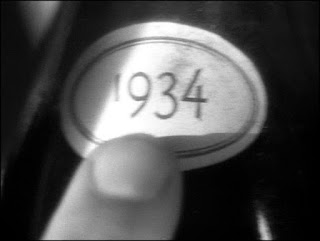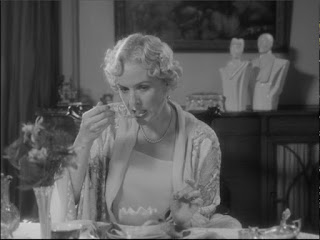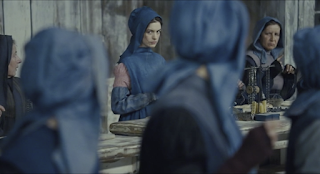The Importance of Color in Storytelling
Week 6 - Oct 2, 2018
Composition and the "Hitchcock Rule":
The "Hitchcock Rule" states, "The size of an object is directly proportional to its importance to the story at the moment."
Composition of Props in a scene to show Emotional Change:
Separation Statues in The Artist (2011)
As the scene progresses between George Valentin and his wife at breakfast, we notice the statues of a man and woman on the cabinet slowly moving apart, representing the change in Valentin's relationship with his wife over the next few months.
Examples of Color Theory in film:
- The Great Race (1965) directed by Blake Edwards
Color Palette - BLACK, WHITE & RED (Black is the color of the villain, White is the color of the hero, Red is the color of the love interest) As the story progresses, Red is influenced by the hero's White and the villain's Black to gain a higher position in the race.
- Blue Valentine (2010) directed by Derek Cianfrance
Color Palette - BLUE (Blue is the color of sadness/loneliness) The story involves two characters who meet for a first date in front of a Wedding Shop. As they fall in love and learn more about each other, the color Blue enters their married life and begins to push them apart. In the beginning of the film, they are seen as a couple in a 2 shot. They drift apart in a world of Blue and are seen alone in single shots.
- Les Miserables (2012) directed by Tom Hooper
Color Palette - RED, WHITE & BLUE (the colors of the French Flag, Tricoloure) The film opens with the French Flag, tattered and underwater. The country is lost. Red represents revolution and the common people of France. Blue represents the government. White represents God, the clergy and purity.
The main character, Jean Valjean is released from his sentence on a French prison ship wearing the color, Red. He is caught stealing from the Church by French police, but is pardoned by the Bishop (who hears White). The Bishop offers Jean Valjean a new direction in life, a pursuit of forgiveness, purity and the color White. For the rest of the film, Jean Valjean will influence the closest people in his life by altering their costume color to White.
The factory worker, Fantine, will cover her Red dress withe the government approved Blue apron until she is discovered by her coworkers to be an unwed mother. She is ostracized from society, sick and homeless until Jean Valjean finds her and promises to care for her daughter. On her deathbed, Fantine is seen in a White gown on a White bed in a White Room.
At the end of the film, Jean Valjean will find a similar end to his journey in a Pale Linen color. He does not earn the Pure White color given to Fantine or her daughter Cosette, but his color shift from Dark Red to Warm Pale White is just as rewarding.
The film ends with a wide shot of the enormous barricade built in the middle of Paris, in heaven. It is crowded with citizens who have sacrificed their lives for the revolution. The final colors are Red, White and Blue unified.

























































No comments:
Post a Comment